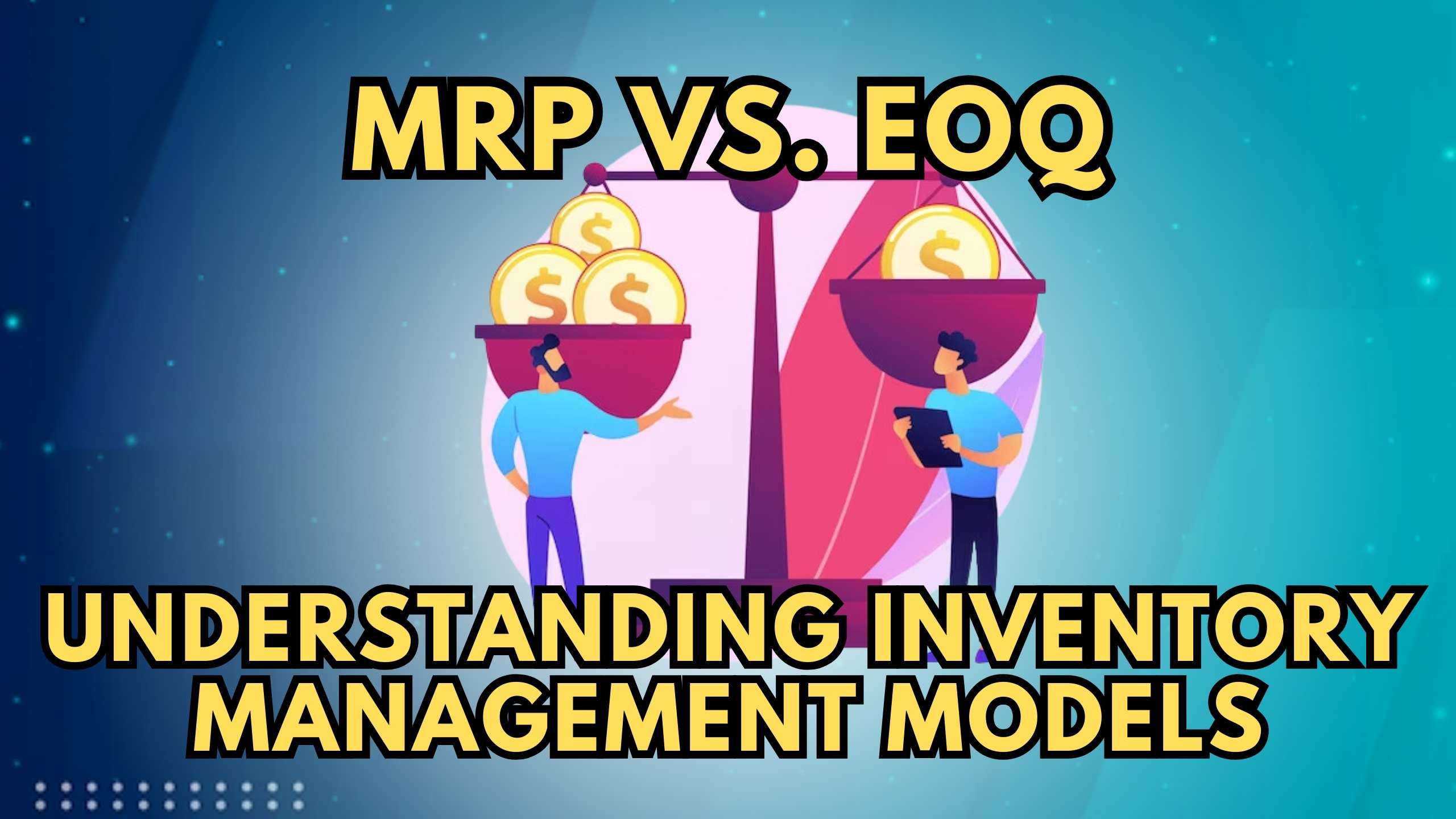MRP vs. EOQ: Understanding Inventory Management Models
- Expense Management Software Credit Cards Investing Business Solutions


MRP vs. EOQ: Understanding Inventory Management Models
Effective inventory management is crucial for businesses to maintain optimal stock levels, meet customer demand, and minimize carrying costs. This blog post delves into two prominent inventory management models—Material Requirements Planning (MRP) and Economic Order Quantity (EOQ)—providing a comprehensive understanding of their functions, benefits, and applications.
Material Requirements Planning (MRP)
Material Requirements Planning (MRP) is a sophisticated system that aids businesses in planning and managing their production processes. By analyzing the demand for finished products, MRP ensures that the necessary raw materials, components, and resources are available at the right time and in the right quantities.
Implementing an MRP system, such as SAP ERP, enables businesses to streamline their production cycles. SAP ERP offers a comprehensive suite of tools to optimize resource planning, synchronize supply and demand, and enhance overall operational efficiency.
Economic Order Quantity (EOQ)
Economic Order Quantity (EOQ) is a mathematical model that determines the ideal order quantity to minimize total inventory costs. EOQ takes into account factors such as ordering costs, holding costs, and demand rate, helping businesses strike a balance between procurement expenses and holding costs.
Businesses can leverage QuickBooks Commerce, a versatile inventory management solution, to implement EOQ effectively. QuickBooks Commerce offers features like order management, demand forecasting, and integrations with various e-commerce platforms, ensuring businesses maintain optimal inventory levels while minimizing costs.
Integrating MRP and EOQ for Optimal Results
While MRP focuses on the production side, EOQ concentrates on inventory ordering. Integrating both models can significantly enhance inventory management effectiveness. By using tools like NetSuite, a cloud-based ERP solution, businesses can seamlessly integrate MRP and EOQ, ensuring a holistic approach to inventory optimization.
Recommended SaaS Products for Inventory Management
Enhance your inventory management strategies with these recommended SaaS products:
- SAP ERP: Streamline production cycles and optimize resource planning.
- QuickBooks Commerce: Implement EOQ effectively with order management and demand forecasting.
- NetSuite: Integrate MRP and EOQ seamlessly for holistic inventory optimization.
- Fishbowl: Improve warehouse management and streamline order fulfillment processes.
- Zoho Inventory: Simplify order tracking and automate inventory control for e-commerce businesses.
Conclusion: Mastering Inventory Management
In conclusion, mastering inventory management involves a nuanced understanding of models like MRP and EOQ. By implementing the right SaaS tools, businesses can optimize their inventory processes, reduce costs, and ultimately achieve sustainable growth.
Revolutionize Your Inventory Management with Subscribed.fyi
Ready to take your inventory management to new heights? Sign up for Subscribed.fyi today and unlock exclusive deals on SaaS tools like SAP ERP, QuickBooks Commerce, NetSuite, Fishbowl, and Zoho Inventory. Access savings totaling $100,000+ per year. Click here to unlock your secret deals: Subscribed.fyi Deals.
Relevant Links:





